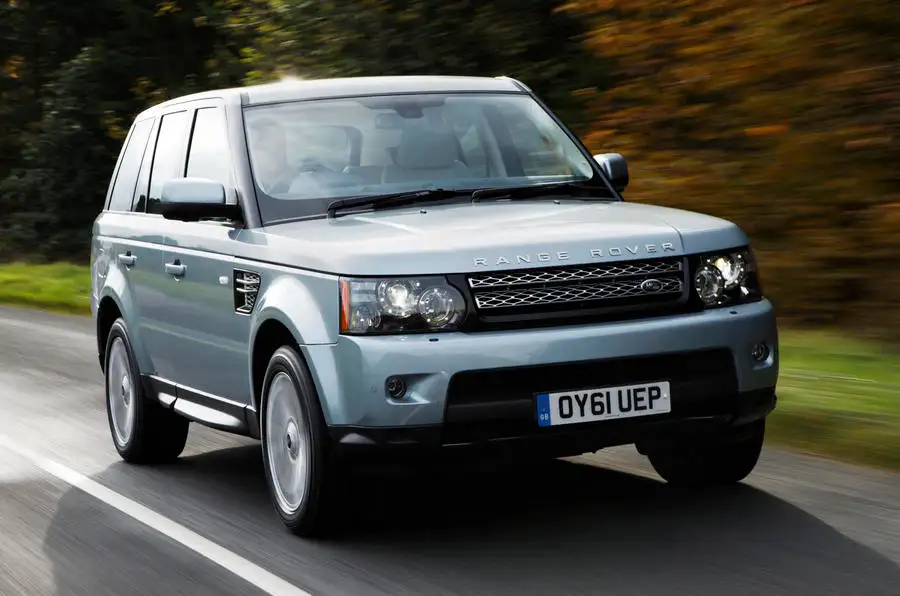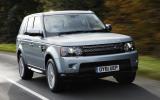What is it?
This is the 2012 model-year Range Rover Sport. It’s more powerful, more economical, has more forward ratios, an upgraded infotainment system and a new, powered, lightweight aluminium tailgate.
The newly-tweaked 3.0-litre V6 turbodiesel comes in two new versions, both of which meet the new EU5 pollution regulations. The less powerful unit (badged TDV6) gets the same 208bhp, but sees Co2 emissions drop to from 243 to 224g/km, neatly slotting it down to tax band K. The more powerful version (SDV6) gets an extra 11bhp and emissions also drop from 243g/km to 230g/km (so it stays in band L).
Using parallel turbochargers, Land Rover says that while the engine provides the full 433lb ft of torque from 2000rpm, a significant 83 per cent of maximum twist only 500milliseconds after it leaves its (newly low, 710rpm) idling speed.
Much of the improvement to the fuel economy must be thanks to the installation of a new eight-speed ZF autobox, which offers a wider spread of ratios with a higher top gear. The torque convertor also locks-up into direct-drive mode more quickly than the old 6-speed ‘box did. It’s claimed the ZF can shift ratios in 200 milliseconds and can monitor the driver’s actions, holding gears when driving around a series of curves and monitors the rate of de-acceleration and brake use to select the right gear for entry and exit into corners.
This intelligent box can also temporarily use a lower ratio to run the engine faster, both to warm the engine more quickly and power-up the air-conditioning to cool a hot cabin. Sadly, the conventional shift lever has been replaced by the rotary dial, though the steering wheel now has paddle shifters. The rotary terrain response selector has replaced by rocker switch. The other big change to the Sport is the adoption of an aluminium, powered, tailgate prompted by complaints from owners about the difficulty of reaching and shutting the original tailgate.
Inside, the standard audio system has been significantly upgraded with a 11-speaker, 380W, Harmon Kardon audio and a dual-view central screen which can show two different screen images at once.
What's it like?
Impressive. Admittedly we tried the Range Rover Sport in near-ideal conditions: the magnificent (and magnificently empty) roads in the Borders and around the Cheviots, but the Sport is a compelling way to travel. The imperiousness of the driving position, the superb forward visibility and very brisk performance is a seductive mix.
The engine is very refined and seamlessly torquey, the ‘box swift and unobtrusive (although on this low mileage example, it would occasionally hang on to too high a gear at very low speeds and was keen to shift into top at higher speeds) and the whole car stable and confidence-inspiring at speed.
The driving position and more cockpit-like interior of the Sport is, arguably, more satisfying than the more limo-esque cabin layout of its bigger brother. The odd thing about driving a Range Rover is that the car tends to fall away from the driver’s attention, with most thought going into either enjoying the ride, the view or revelling in the car’s ability to stride past slower-moving vehicles.
Indeed, the trademark express-train Range Rover overtaking manoeuvre has to be one of today’s definitive driver experiences. On challenging country lanes, the Sport is surprisingly capable, and the ride only rarely betraying a slightly knobbliness and the steering’s (mechanically, a different set-up to the related Discovery) accuracy and weighting pretty impressive for a vehicle of this type.















Join the debate
Add your comment
Re: Range Rover Sport 3.0 SDV6 HSE
They probably do have Bluetooth but I doubt the drivers, most of whom do seem pretty 'impatient' would bother reading the hefty manual and working out how to pair their phone up, especially as most RR's are autos leaving one hand free. Techno toy overload.
Re: Range Rover Sport 3.0 SDV6 HSE
Another RR....whoopee!,hardly notice them,and yes, if i could afford to spend that kind of money on transport i still wouldn't by one.
Re: Range Rover Sport 3.0 SDV6 HSE
That's true, the more expensive the car the more likely it is to see the driver on a mobile.
The 'premium' brands do seem to charge extra for bluetooth. I didn't spec Bluetooth on my Audi because I wasn't expecting to keep it long on a PCP. Due to a change of situation a year in I now own it outright and want bluetooth and iPhone connection which is going to cost the best part of £500 to retro-fit. It came as standard on my wifes new Vauxhall which makes it even more annoying.